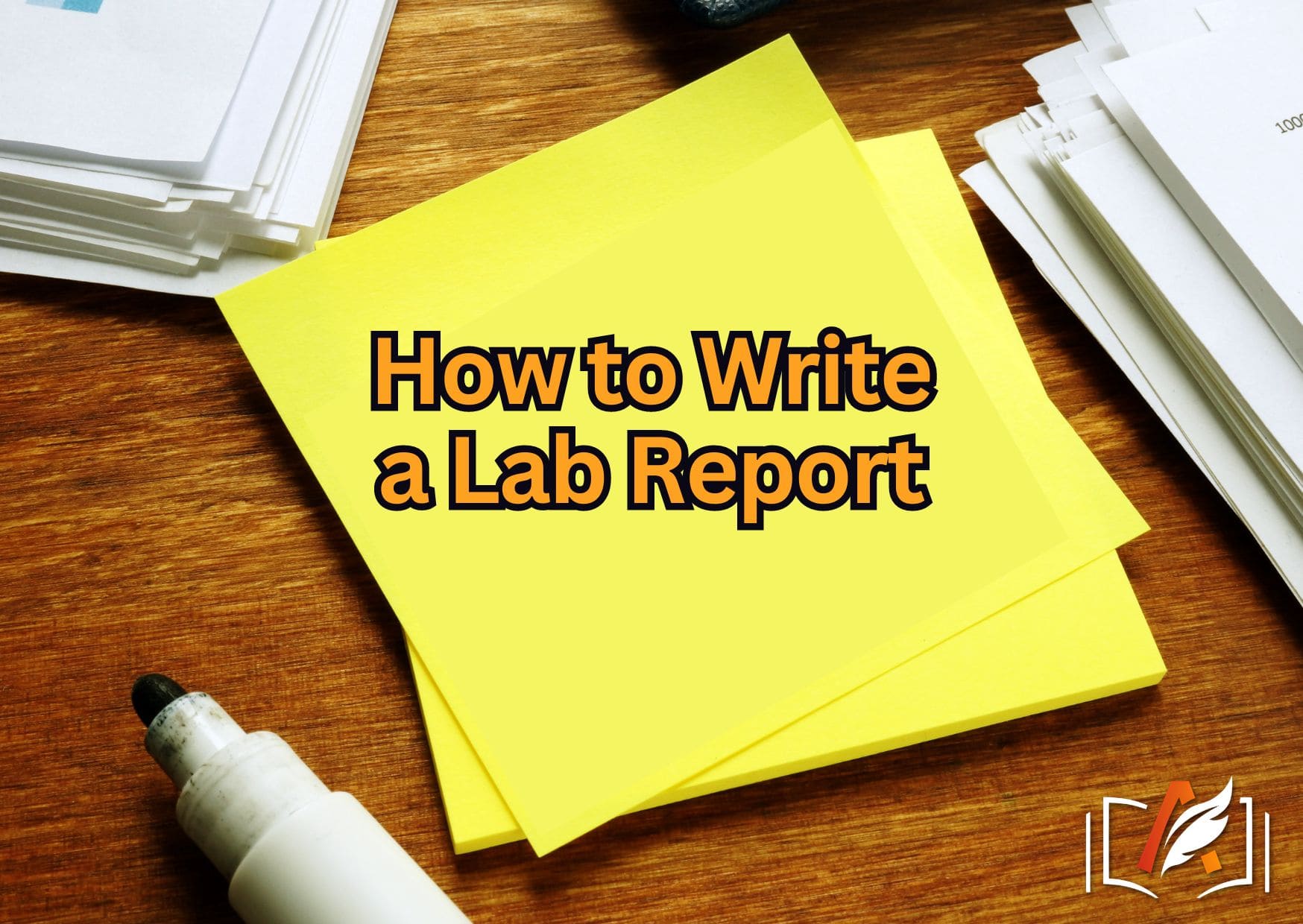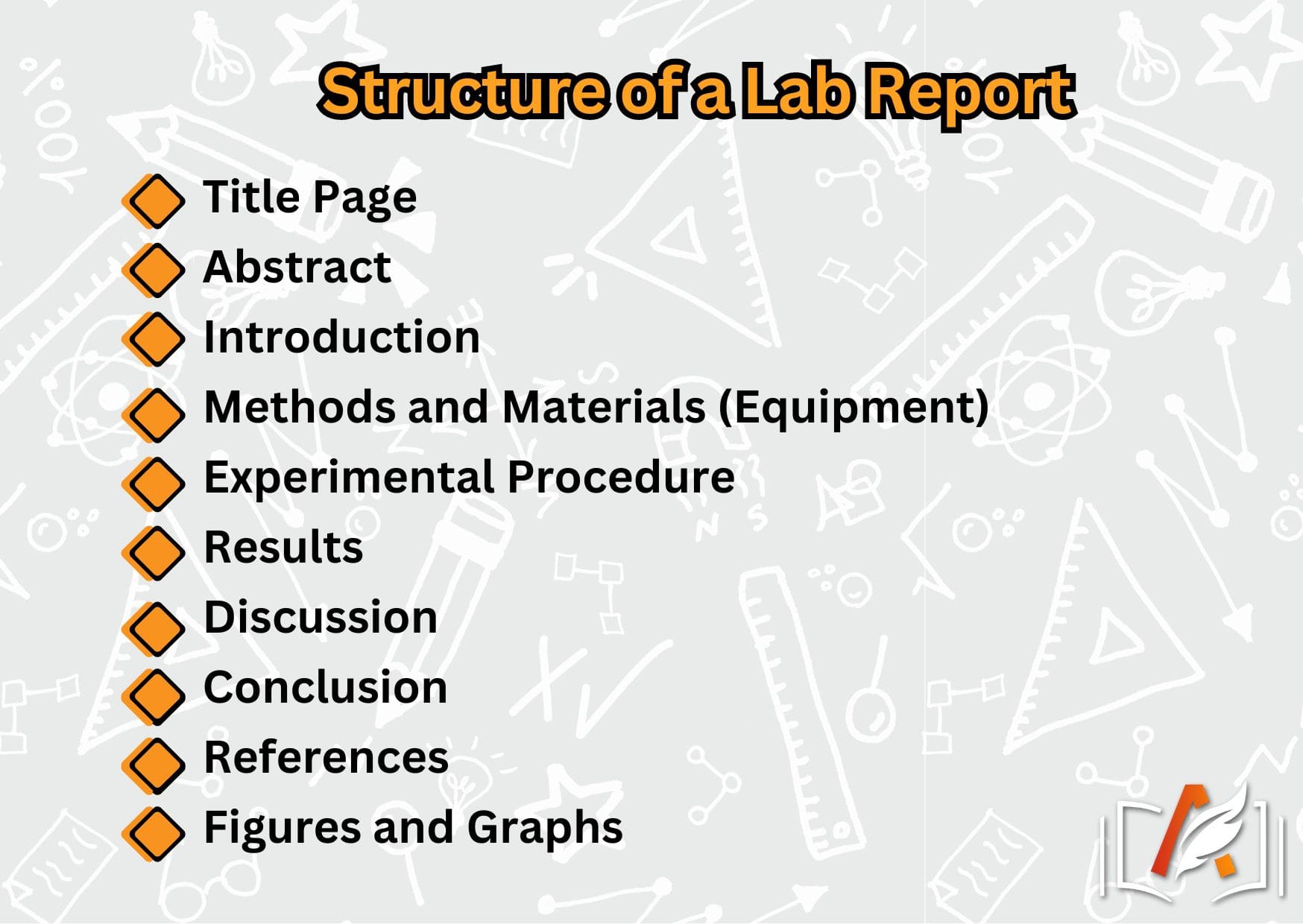 Ruby Butz
Ruby Butz

Lab reports bridge the gap between classroom theory and laboratory practice. Writing a solid lab report demonstrates your understanding of the course material to your professor and shows your ability to apply these concepts in a practical setting. Let’s talk about how to write a lab report efficiently!
What is a Lab Report?
A lab report is a detailed playbook that guides you through your experiments in the lab. You don’t just do experiments: you write them up so that readers can see and understand how and why you did it and the results and implications of experimenting. The fundamental goal of lab report writing is to show that you can think critically, apply theories in practice, and effectively communicate your results. Lab reports are essential in Chemistry and Biology and are also required in fields like Sociology, Engineering, Nursing, and Forensic Studies. For example:
- Sociology researchers explore behavioural experiments or surveys
- Engineering students could be testing materials or new designs
- Nursing scholars often delve into clinical studies or simulations
- Forensic Studies are about crime scene investigations and analysis
Each field uses the lab report to force students to apply theory to practice, develop skills outside the lab, and engage in learning and professional growth. The UK writing service is a reliable solution if you have any challenges writing a lab report. It provides expert assistance to guide you through writing complexities, ensuring your reports comply with academic standards.
How Long Should a Lab Report Be?
The length of the report on lab work depends on the complexity of the experiment and the course requirements. However, most lab reports, including figures and graphs, are usually 2 to 10 pages long. The required report length is usually specified in the assignment, as there are no strict limits for this type of work.
What are the Rules For Writing a Lab Report?
A lab report must be clear and concise, written logically, using the past tense and third person, and include all the data and findings. A professional lab report writer can help you enhance the quality of your report by providing a lab report template, making it easier for you to communicate your research effectively and meet academic standards.
What is the Writing Style of a Lab Report?
A lab report should be written formally and objectively, avoiding personal pronouns and always aiming to communicate clearly and precisely. For this type of scientific work, it is better to use passive voice to shift the focus from the researcher to the action or the research subject. For example, "The solution was heated" rather than "We heated the solution."
What Should Not Be Included In a Lab Report?
Do not add irrelevant details, personal opinions, or speculative statements to a lab report. Ensure the report discusses only factual and supported observations and stays focused on the experiment and its results.
How to Write a Lab Report: Structure with Examples
A proper lab report structure is essential to format it neatly and ensure every part communicates a specific aspect of your experiment. A well-organised lab report can enhance the reception of your scientific investigation by clearly presenting your methods and demonstrating rigorous methodology. Let’s look at each lab report section in detail to understand its purpose and importance.
1. Title Page: Your lab report cover page, front, or title page must present the first impression. The lab report title page has the leading information: you should describe the experimental topic accurately and concisely. This page will have all the contributors to the report (e.g., group members and instructors) and the date when the experiment took place.
2. Abstract: A lab report abstract summarises the whole report in an independent synopsis around 150-200 words. It briefly touches on what the experiment aimed to test, the methodology, the most significant findings, and the main conclusion. Abstracts are helpful because other researchers and students can quickly understand the work’s relevant context, determining whether or not the full report requires a thorough reading. Example:
This experiment investigated the effect of sunlight exposure on the growth of basil plants. It measured the changes in the height and number of leaves per basil plant grown under four different lighting conditions for 14 days. The results suggested that plants exposed to sunlight for at least six hours a day had grown 50 per cent larger than those exposed to less light.
3. Introduction: A lab report introduction explains the background information and sets up the experiment. It describes the scientific theory or principle being tested, lists the specific goals or hypotheses to be confirmed, and defines the experiment’s importance and relevance to the field. With professional report writing help, you can learn how to write lab report introductions that effectively communicate the necessary context. Expert guidance enables you to structure your thoughts coherently, refining your scientific narrative and enhancing the overall quality of your lab report.
4. Methods and Materials (Equipment): This section describes all the materials, tools, and procedures used in the experiment. It should include the precise chemical concentrations, brand models of the instruments, and a detailed description of the set-up that should allow the experiment to be done exactly as before by others. It is another pillar of the scientific method. Transparency is essential for the research process. It serves as a control for checks and validation by the broader scientific community so that results can be trusted and used as a basis for future research. Here’s a lab report example of the Methods and Materials section. For example:
We had four basil plants, a ruler, a light meter, and four environments: full sun, partial shade, indoors with artificial light, and complete darkness, in which we measured how each plant grew every two days.
5. Experimental Procedure: Next to it, in the Experimental Procedure section, comes a day-by-day account of what was done, a chronological record of every action and condition that occurred, from the initial measurement to the final result, all in language that is as detailed as possible. This way, if another researcher wants to repeat the experiment, they can do so under identical conditions. The section of a laboratory experiment report is crucial for verifying scientific findings, troubleshooting issues, and refining experiments through peer review.
6. Results: The Results section of a lab report is carefully structured and presented objectively, using the data collected during the experiment. The lab report format of this section usually includes tables, charts, or graphs to visually condense information. It is a crucial element, as everything that follows is an analysis, discussion, and conclusion based on the empirical findings of this section, which substantiates the report and identifies the work as scientific.

7. Discussion: The Discussion section analyses how the results relate to the original hypothesis and the broader field of research. Here, you interpret the data, assessing how the findings align with or challenge existing knowledge. This section should address any unexpected results, their potential implications, and possible reasons for their occurrence. The lab report discussion extends the impact of the findings, considering their practical or theoretical significance, connecting them to broader scientific concepts, and suggesting areas for further research.
8. Conclusion: The lab report conclusion states the experiment's results, repeating how they work with the hypothesis and discussing general implications. It should summarise the research's accomplishments, critical successes, and limitations shortly. It also generally includes discussing what could be studied next and mentioning how future research could build on the present experiment. This part of the report brings a sense of closure to the study, leaving the reader with a clear understanding of what was done and why this matters to the field. Look at the example:
The experiment results show that the hypothesis that plants exposed to more sunlight will grow more than others is supported. The basil plants exposed to full sunlight grew more than those in the other conditions. More research can be done to find out how different light spectrums may affect plant growth.
9. References: The References section is a crucial element of the report, as it lists all sources the experiment was based on and which informed the report's writing. By accurately citing their sources, readers can follow the origin of ideas or findings introduced in the report, assess the basis and limits of the reporting, and access the sources for further study. The appendix lab report section should be placed after the References section and include supplementary material that isn’t essential to the main text of the report.
In Conclusion
Learning how to write a lab report isn’t just an integral part of your studies – it has a lasting impact on how your scientific investigation is received. If you learn how to write a university lab report, you’ll demonstrate that you grasp the rules of scientific research. It also showcases a valuable skill: your ability to communicate effectively. Getting this skill right can impact your grades and future academic and workplace career prospects.
The more you enhance your ability to write concise, clear, and well-organised lab reports, the better you'll be for success in any job, whether in research, industry, or any field requiring precise and clear communication.

Meet Ruby Butz, the accomplished author at the StateOfWriting educational blog. With a Master’s in English Literature, notable articles, and extensive teaching experience, she has helped thousands of students develop strong writing skills.
Writers are verified and tested to comply with quality standards.
Work is completed in time and delivered before deadline.
Wide range of subjects and topics of any difficulty covered.
Client id #: 000412
Paper type: Research paperI just wanted to say thank you for the collaboration. You saved me from having to retake modules. The semester is finally coming to an end - just one more month to go, then it’s time to rest. See you next academic year
Client id #: 000411
Paper type: Thesis paperprofessional service on all fronts. my 10-day order was completed in just 6 days, giving me extra time to prepare for submission. very satisfied
Client id #: 000410
Paper type: CourseworkAll was completed just as I wanted. Excellent support - Big thanks to all of you 🙏🤗